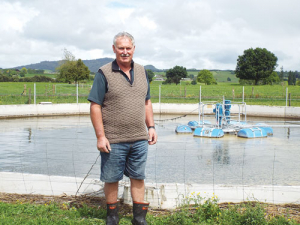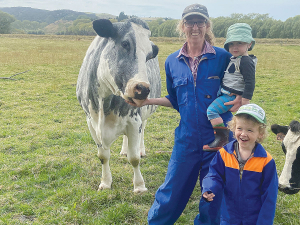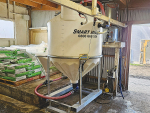One dairy farmer who has the effluent problem under control is John van Heuven, who with his wife Maria milks 500 cows on 165ha at Johmar Farms on the outskirts of Matamata.
Having decided to increase cow numbers and install a 54-bail rotary for 2015, van Heuven decided to upgrade effluent storage, which had capacity for 1.5 milkings and needed closer attention.
As an AI technician he had travelled the greater Waikato region extensively, and had seen many new systems commissioned, allowing him to weigh pros and cons, and prompting him to “make sure they do it right and do it once”.
Concrete was the way to go, he decided, going with Presco Group, Hawera, which offered a complete package of concept, survey, installation and commissioning.
First port of call was a review of capacity needs, using the dairy effluent storage calculator (DESC) to compute requirements considering the number of cows, soil type, terrain and rainfall.
Then came a full geo-tech survey and design, including sign-off by the company’s engineer, thus by-passing a building consent; effluent storage is deemed a permitted activity for a dairy farmer.
Presco Group’s ProSump system uses reinforced, pre-cast concrete panels, in this case 26 items 3m tall and holding about 1.1 million L.
It has a metal base with integral drainage to remove groundwater, and panels with a butt joint which uses a novel three-way seal system to hold liquids securely; the panels are supported by external cast concrete buttresses.
Internally a sloping floor falls to the centre of the tank, creating a vortex during agitation to keep solids in suspension, and increasing overall capacity.
Concrete is specified to 40Mpa strength and mixed using reduced water content to minimise shrinkage and cracking.
After 15 months of operation, and using a pontoon-based pump and agitator supplied by Reid and Harrison, the system is exceeding expectations and is faultless in operation.
Set up with lines feeding travelling irrigators, it can irrigate 56ha. The system is manual but the switchgear can accommodate upgrading to automation.
Van Heuven says he is “sure we made the right choice”.
“It’s a little more expensive than other construction methods, but using concrete gives us a build-and-forget advantage guaranteed for 50 years – great for peace of mind.
“Also I know that if we have problems with sediment we can go and get a digger to clean out the tank, which can’t be done with liner based systems.
“Compared to our old 1.5 milkings capacity, which was fraught with risk, we now can deal with up to 10 days of effluent, and more importantly utilise it fully on the farm.”
http://www.presco.co.nz














